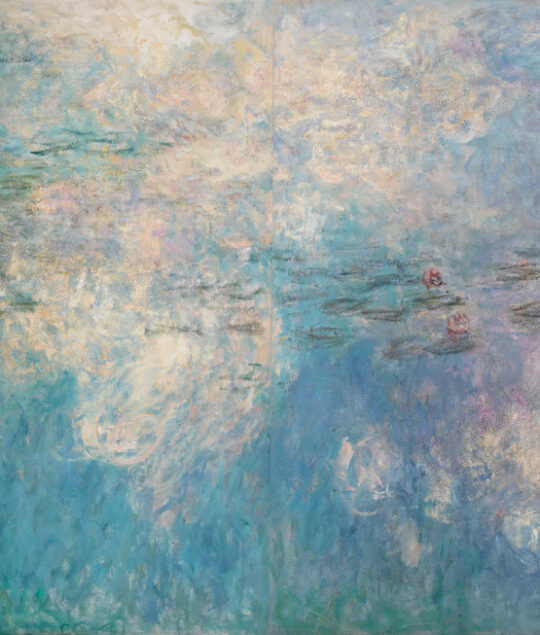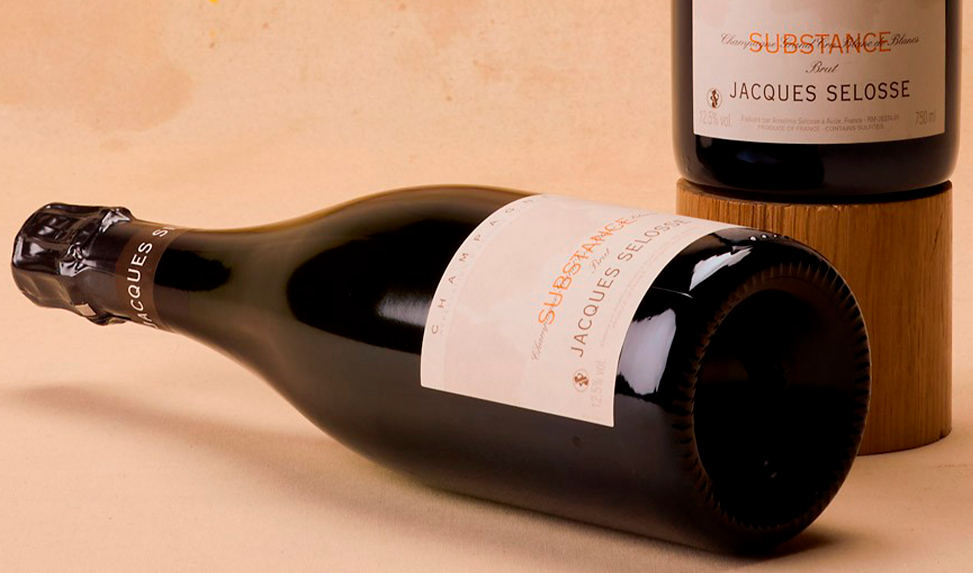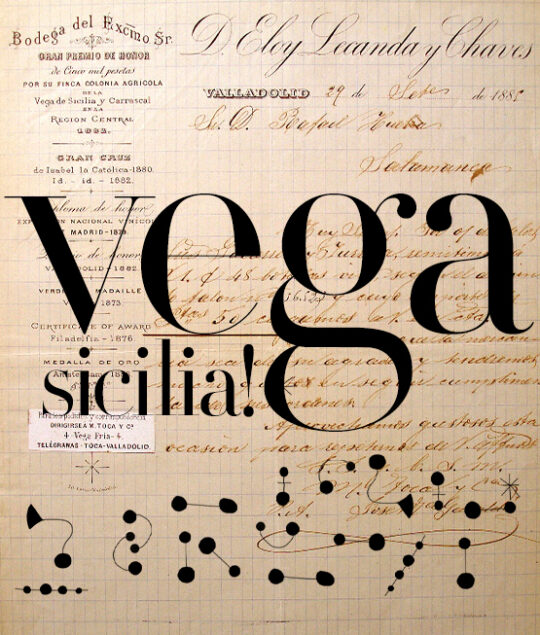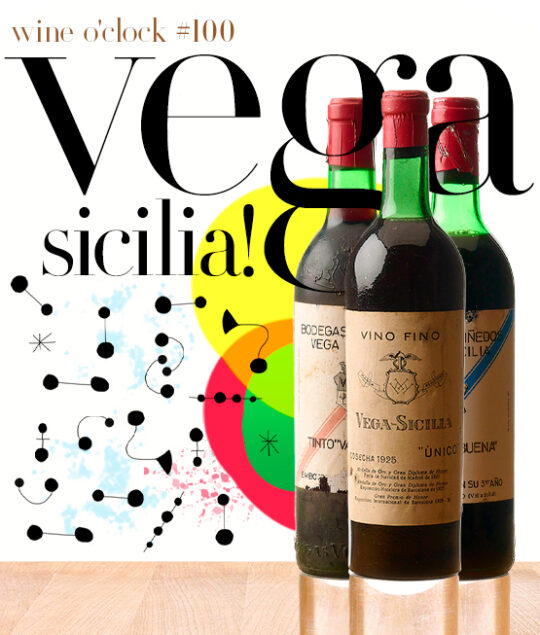

By Virginie Maison
A subjective, synaesthetic experience!
Since September 2023, I have been working as an auctioneer at Baghera/wines France and living my life with passion, moving from the world of art to the world of wine. So what could be more natural than to offer you an approach that embraces these two worlds. Let's embark on a totally subjective, synaesthetic experience, in which my visual perceptions should simultaneously generate auditory and gustatory sensations. Provided I am attentive. I am going on a quest for the taste of a work of art, giving you a tasting note and suggesting an art & wine pairing.
art
Impressionism celebrates its 150th anniversary this year. I have decided to honour this anniversary by taking the obvious route of the Musée d'Orsay and its current exhibition, which demystifies the founding episode of the first exhibition in 1874, bringing together works by Monet, Renoir, Degas, Morisot, Pissarro, Cézanne and Sisley. Tuesday 16 April. Full. Obviously, the crowds put me off. How can I fully experience the work in a crowd? I'll go to the Orangerie the next day, at opening time. I will be the first in the rooms where the Water Lilies are exhibited. Immersed. And there, in this veritable ‘Sistine Chapel of Impressionism’, as André Masson called it, I will go from dazzlement to delight.
Wednesday 17 April. 9 am. And that's exactly what happened.
At the entrance: “ THE WATER LILIES BY CLAUDE MONET – The Water Lilies rooms were conceived by Claude Monet as places for meditation: in order to respect his wishes, we invite you to visit this exceptional work in silence.”
And that is very well said. A religious silence still reigns in the room. I rediscover these monumental compositions that I so enjoyed visiting when I was a student. But this time I have come with a very specific intention. To observe, see, feel, identify and express, from the eyes to the palate. I instinctively set my sights on one of the paintings. Before this masterpiece, I am overcome with emotion and literally experience the painting as it unfolds through sensations, impressions and variations. All of Impressionism is here, before me. All of Abstraction too. For if Monet is one of the fathers of Impressionism, he is also one of the fathers of Abstraction. And the panel that consumes me makes a magnificent link between the two. I enjoy a unique experience before this panel, the exact title of which I still do not know. Absorbed. Never have I seen it through these eyes. Never have I perceived so many waves on the surface of this pure water. The water lilies as a pretext for a much more vast and abstract representation. Through the vibrations of the canvas, the great master of modernism plunges us into a world of sensations and depths that resonate between the painter and ourselves. The painting then becomes a medium of exchange between the painted impressions and our own sensations, memories, dreams. From left to right, I see aquatic plants competing with the nebulous background, to which a cameo of turquoise gradually lends radiance as my gaze wanders from the edge of the painting. And there is the climax: the second quarter of the painting. Claude Monet, a painter of light, plays with it like a musician with his notes, and here he creates the light that sets the whole rhythm of the painting. I feel good at this point in the painting. It is the moment that warms the surface of the water that is strewn with flowers. The water lilies tinged with white and red are barely discernible, yet in the centre of the painting I project an abundance of flowers, clouds of flowers even, straight from the cherry trees of Japan in spring. Then this flowery sensation disappears and a lighter vision takes its place, joyful and airy. Generous, cottony pink clouds pass before my eyes. Pink clouds... And yes, there it is, the communion of nature. The sky is reflected in the water. The clouds flutter across the surface of the pond, lending volume to the canvas. The legacy of the pre-impressionist skies of Eugène Boudin, so much admired by Claude Monet, is not far away. I am overcome with emotion. Emotions intermingle like the painting, with its shadows and highlights, to touch on the subtle balance present in nature. Everything in motion. There is no longer any surface. There is only mass, infinite, moving, magical. The imprecision of the forms and the blurring of the contours distance the subject from its expected figuration to evoke the effects of the soul, to broaden the vision and touch on abstraction. Then comes the final act of the painting. On the right, the darkness seeps over the broad, luminous breath, so precious in the centre of the work. Night falls. My heart tightens. This is the end. Les Nuages (The Clouds), as I later learned the work was titled, is to my mind a masterful allegory of life that engages at once the senses and the mind. I could not have chosen a better first synaesthetic experience to share.
The Water Lilies by Claude Monet (1840-1926) is a group of eight panels, each measuring 200 x 600 cm and housed in the Musée de l'Orangerie in Paris.
The painter of plein-air painting drew his inspiration from the Japanese-accented 'water garden' at his estate in Giverny, Normandy.
Two panels were donated by the painter through his friend Georges Clémenceau the day after the armistice of 11 November 1918, as a symbol of peace. He donated the other 6 panels in 1922 and the collection was installed in the Musée de l'Orangerie in 1927, after the artist's death.
In the 21st century, David Hockney makes no secret of the master's influence in his work, and Oliver Beer will be taking up the water lily cycle at Hangar 107 in Rouen from 23 May to 21 July with his Resonance paintings, created using reconstructed sounds from the Giverny pond.
Claude Monet painted more than 250 works on the theme of water lilies, including ‘Le Bassin aux nymphéas’ (Water Lily Pond), painted 1917-1919, which sold at auction for 74 million dollars at Christie's in New York in November 2023.
wine

Before this monument of painting, the wine must inevitably be exceptional.
Monet's work is of an incomparable intensity, luminous and free, rich in contrasts, powerful and poetic.
The wine will be an exceptional white, a Champagne even, combining depth with breath, brilliant aromas and a finish that holds us in the light.
So I look to Julie Carpentier for her expertise and experience.
On reading my tasting notes, the pairing is obvious. The wine will be a Champagne Jacques Selosse.
“ This monument of painting intuitively evokes another monument, that of vines and wine: the Substance cuvée by winegrower Anselme Selosse, whom we had the pleasure of welcoming in Geneva very recently with Marie-Thérère Chappaz – another monument in the world of winegrowing, this time from the Valais. The Selosse family's highly personal, intuitive approach, which could also be described as Burgundian, is embodied in the fascinating Substance cuvée, which echoes the work of Monet.
Substance is a blanc de blancs from a single vineyard (Avize) made using a unique solera system. The blending has been completed each year with more recent vintages, for almost 40 years.
Substance is a unique wine. Once you've tasted it, you'll never forget it. It makes an impression like no other wine. For its unique nose, which over the years has conjured scents of hazelnut, almond, honey, citrus fruits, sometimes caramel, a fine minerality and, finally, an unchanging, slightly oxidative note. For its very fine mousse on the palate and its pure, refined balance. And finally, for the chalky tension on the finish which is characteristic of Anselme Selosse's wines, and the crystal-clear clarity that brings this monument to Champagne viticulture to a close.”
Many thanks, Julie. The match is made!
I will end this Art & Wine correspondence with a thought for Charles Baudelaire, the great poet of modernity, who wrote his poem Correspondances in “Les Fleurs du mal” in 1857 to ‘sing the transport of the spirit and the senses’ and the synesthetic associations he later theorised. Baudelaire had a fine nose!



